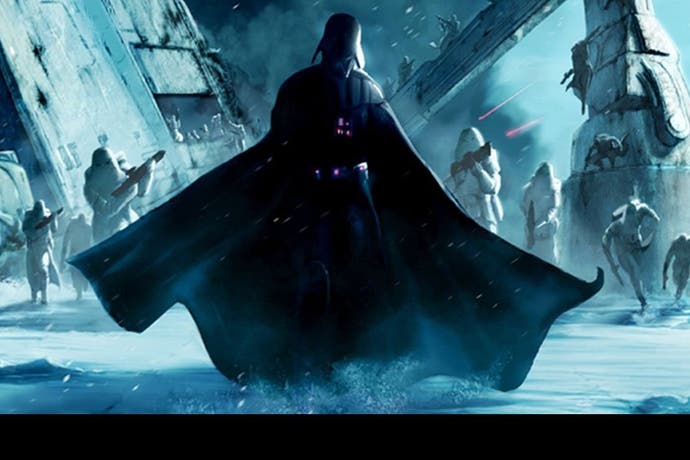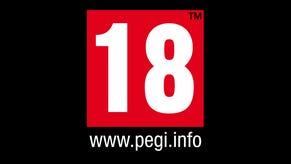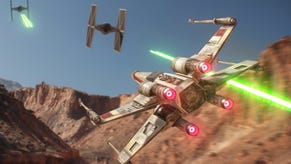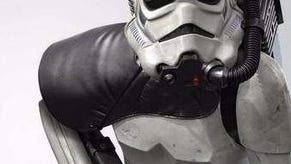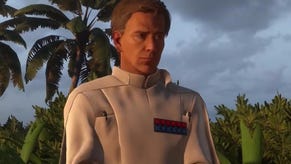Digital Foundry: Hands-on with Star Wars: Battlefront
The PC version dissected ahead of the open beta.
In certain respects, Star Wars: Battlefront is the best looking game the Frostbite 3 engine has yet produced. The toolset is suitably expanded to make sure each map and weapon holds true to the source material - a product of its new physically-based rendering. That said, having experienced the PC beta code first-hand at a recent press event, it's also fair to say that certain aspects of its technology are pared back compared to DICE's Battlefield line. It's a different beast of course, but just what does this mean for the game, and its performance on PC?
Due for public beta testing on PS4, Xbox One and PC later this week, the three maps on show are no doubt impressive during panning shots; sharp, beautifully lit, if somewhat limited in terms of physical destruction. The newest map, Sullust, is set around a tightly knit wasteland and really hammers these two realities home. Its strengths in lighting are clear to see across the volcanic rocks and downed ships at every turn - impressively boasting the process of 'photogrammetry' DICE uses to collect data for each material in the game.
Real-world reference points help, with the original trilogy's filming locations and props like lightsabers or X-Wing models scanned into the system as a digital record. This is where the engine's physically-based rendering comes in; material properties are applied for each weapon, character and terrain. From there, in-game assets react realistically, based on their colour, roughness, opacity or reflectance - something borne out whether you're staring at the thigh-deep footprints on the snowy Hoth stage, or the opaque flags lining Tatooine's red canyons.
It's one of the real stand-out points of the Star Wars: Battlefront beta. This lighting model is hard-wired into the game too, with no compromise on the PC's lower settings. Between low, medium, high and ultra presets, physically-based lighting is always in play.
There's a lot of wiggle room in Battlefront's four graphics presets though. It's good news for those considering playing the game on a lower-end PC, and as you can see in the video above, there are plenty of settings to work with. On the low setting we inevitably see the biggest compromises to ambient occlusion (which is switched off outright), texture quality and shadow resolution - but ultimately the visual set-up holds strong.
It's the same story for draw distances and texture filtering across the ground, where there's a marked improvement once we move to high or ultra settings. Map design is fixed in place, with the crucial geometry rendered in at any range, but at lower settings we see that decorative debris only draws in up close. Added to that, only the high and ultra presets qualify for parallax occlusion mapping, deforming the terrain to give surfaces a more three-dimensional effect. By contrast, the lower rung settings are left entirely flat, with no protrusions or dips.
The graphics menu stands mostly as-is compared to Battlefield 4 and Hardline. However, the deferred multi-sampling anti-aliasing option is removed in Star Wars: Battlefront. This is a far more taxing, GPU-side method that operates on geometric vertices to treat jagged edges, and once worked well when paired with FXAA. However, now we're simply left with the latter, post-processing approach, offered at three levels of quality.
FXAA does a solid enough job of cleaning the image's rough edges on its highest quality setting, and the silver lining is the performance hit is minimal. But of course, there is residual blur to this method, and it's a shame the alternative method is seemingly axed. Fortunately, DICE has moved to introduce further AA options, and a TAA method is added to the menus, giving us the option of a temporal pass on the image - reducing visual noise in motion. We're hoping to check out this mode in more depth once the public beta starts, as it's likely running with another form of AA underneath.

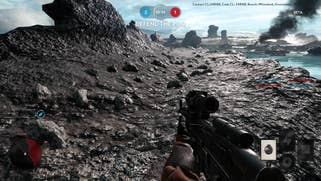
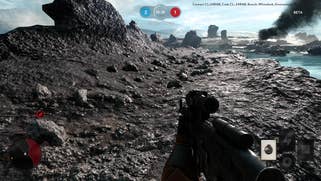
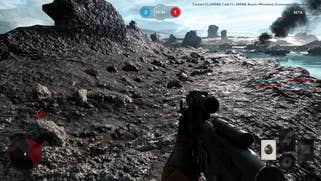
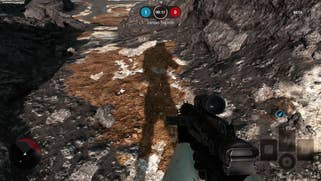
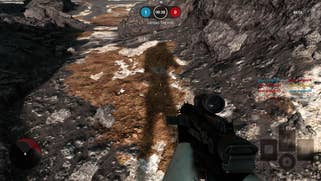
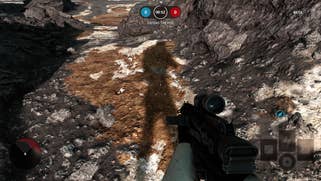

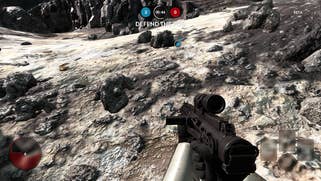
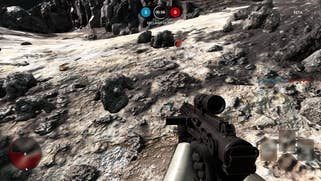
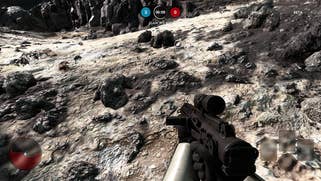
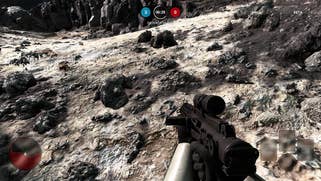
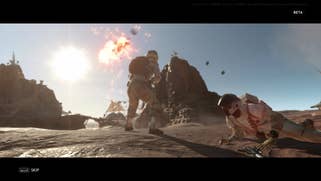
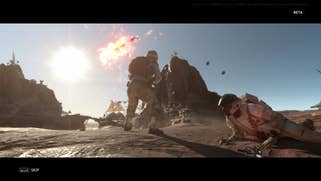


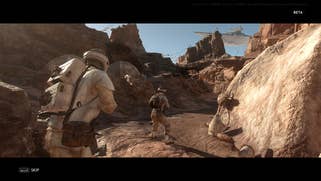
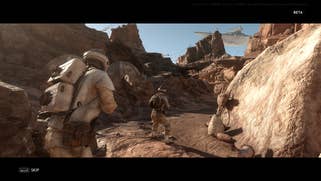
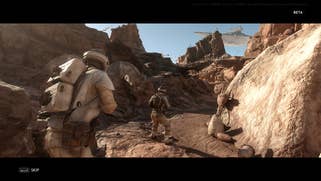
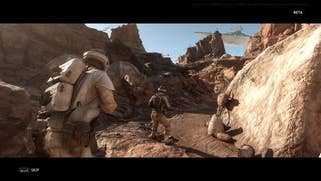
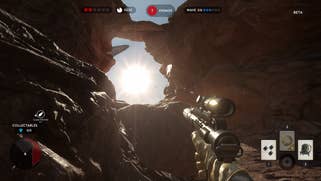
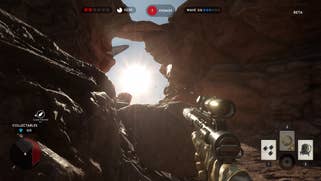

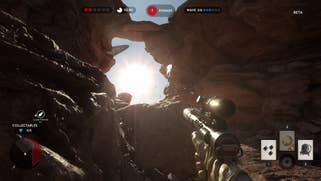
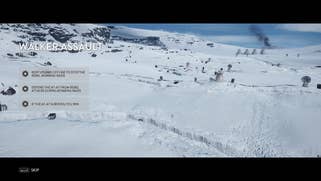
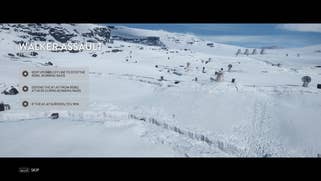
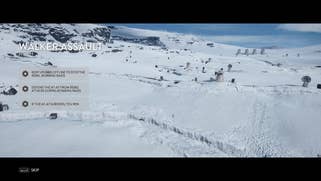
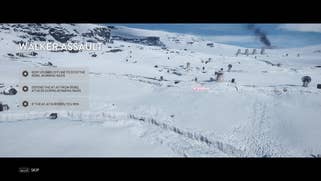
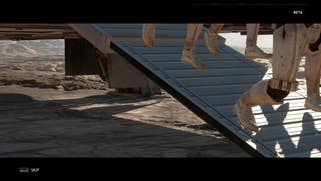

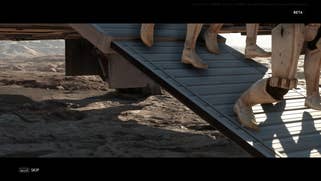
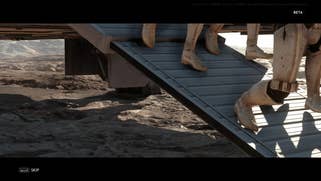
But how does Battlefront hold up when entirely maxed out? Though each map certainly looks impressive from afar, there are limits to what DICE is striving for in its Star Wars shooter. It's fair to say that the snowy Walker Assault stage is the most technically ambitious effort of the bunch, as also seen at E3 earlier this year. The sight of giant AT-AT vehicles pacing across the tundra is unlike anything seen from the studio's previous works - and with its on-point lighting in tow, it's an authentic sight from afar. But after a few games, it's clear the overall ambition doesn't quite match up to Battlefield 4 or Hardline in some respects.
The snag is this: at 40 players, gameplay is generally less eventful compared to the 64-player chaos of recent Battlefield titles. Added to that, we also only see limited use of physics-based destruction on each map. Besides the chip-damage to huts around Tatooine, structures are for the most part static - removing a big part of Frostbite 3's original appeal. And unlike Battlefield, vehicles are also only activated through power-ups found randomly on the ground, making the Hoth map feel sparser than it should. From a technical perspective, the scale and flexibility of the map isn't quite up there with DICE's finest - it's beautifully lit, but feels somewhat intangible, with more limited interactivity with the environments in terms of the destruction model.
But how about performance at ultra? Having iterated on the Frostbite 3 engine over many games since Battlefield 3, it's clear DICE's engine remains well optimised for PC. Multi-core support for CPUs is a lock, and in stress-testing on the Tatooine survival mission, it really holds its own.
Curiously, the preview event didn't supply a top-of-the line PC to play the game - no SLI or CrossFire set-ups, and no sign of Fury X or GTX 980 Tis. Instead Battlefront was running something a little more down to earth in terms of specs, which is good for getting a measure of performance on more typical enthusiast-level games PCs. This sported an i7 4790 processor, with 8GB of main RAM, and an AMD R9 290X - a curious set-up given the game's recommended specs mention 16GB of main RAM (we saw no evidence that RAM was an issue during our testing). Running with an unlocked refresh at ultra settings, this PC still gets us far above the 60 frames per second line. At 80fps for the most part, there's a strong overhead even in the challenging Walker Assault map, meaning we can set v-sync without any worries of stuttering below 60fps.
This is good news. Bearing in mind this 290X card is now out of stock, and its closest replacement - the R9 390 - costs around £250, this is a respectable turnout. It means we don't have to go break the bank to afford a top-grade setting in Battlefront - and by dropping a few presets, we're willing to bet it'll run well on less capable cards as well.
Overall, it's a shame Star Wars: Battlefront has no true campaign mode to really use DICE's on-point art design. The Frostbite 3 technology is there to deliver on a potential only fleetingly tapped into with each cinematic entrance to a map - snippets of what could have been. As for what the full game offers from each map in this regard, we'll have to wait and see. We spotted seven multiplayer maps in total in the build we played - with 12 promised for the final article - and we hope they're each as ambitious as the three we've seen in this beta.
As for the PC experience as a whole, it's labelled as a beta build, but there's a finality to its level of performance. We encountered no major stability issues (knock on wood) and the presets show a solid spectrum for tweaking around GPU constraints. It's looking solid then, though with elements such as Battlefield's destruction physics pared back, and also the relative scarcity of vehicles, it's not a full-on advance for the engine.
It may well be the case that these compromises are made for the benefit of console development; streamlining the experience to cater for platforms where physics-based action tended to buckle performance in previous games. When considering the PS4 and Xbox One's prospects here, the frame-rates on PC so far are promising. At the very least, Star Wars: Battlefront is set to leave its mark as one of the most authentic-looking games to use the Star Wars license. Whether that's enough to grasp us in the long term, we'll have to wait and see. We didn't get access to the console builds during our trip to DICE - and so we'll report back on those as soon as we can, after the public beta goes live.
